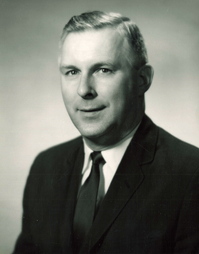 H. Mead Cavert received his B.S. in Agricultural Biochemistry in 1942, his M.D. in 1951, and his Ph.D. in Physiology in 1952, all from the University of Minnesota. He joined the faculty of the University’s Medical School in the Department of Physiology in 1953. From 1957 until 1968, Cavert served as assistant dean and then associate dean of Medical Student Affairs. He served as associate dean of the Medical School from 1968 until 1992.
H. Mead Cavert received his B.S. in Agricultural Biochemistry in 1942, his M.D. in 1951, and his Ph.D. in Physiology in 1952, all from the University of Minnesota. He joined the faculty of the University’s Medical School in the Department of Physiology in 1953. From 1957 until 1968, Cavert served as assistant dean and then associate dean of Medical Student Affairs. He served as associate dean of the Medical School from 1968 until 1992.
Interview Abstract
H. Mead Cavert begins by describing his background, including his childhood, his education, and why he chose medicine as his profession. He describes his work in the Department of Physiology and his research in the early 1950s. He discusses entering medical administration and his work as Assistant Dean, Associate Dean and Executive Officer of the Medical School, and Associate Dean for Academic Affairs. He reflects on working with Maurice Visscher, Nathan Lifson, Jack Johnson, Neal Gault, Harold Diehl, Robert Howard, and Lyle French. He discusses the appointment of Robert Howard to replace Diehl as the Dean of the College of Medical Sciences, and the creation of the Vice President of the Health Sciences and the hiring of Lyle French. He discusses the faculty practice issue; the financing of medical education in the late 1950s and 1960s; the dean’s office relationship with the state legislature and its role in securing state funds; the revision of the Medical School curriculum in the 1960s and responses to the revision, including the Comprehensive Clinical Program and the Rural Physician Associate Program. He also discusses the development of the Academic Health Center; transfer students from the Universities of North and South Dakota in the late 1950s and 1960s; the attempt to establish a medical school in St. Paul; the establishment of the Medical Scientist Training Program, the history of the MD-Ph.D. program and Ph.D.s in clinical medicine at UMN; the relationship between the University of Minnesota and the Medical School and the Mayo Clinic; the issue of the status of residents as students or employees; team teaching in the health sciences; and the establishment of a program for minority students in the late 1960s. Cavert’s wife, June Cavert, sits through most of the interview, interjecting a few comments. At one point, she discusses the organizations for the wives of undergraduate medical students and residents, and the Caverts also discuss the contribution of spouses (generally wives) to the successful development of medical students and residents.
Biographical Sketch
H. Mead Cavert was born in St. Paul, Minnesota, on March 30, 1922. He received his BS in Agricultural Biochemistry in 1942, his MD in 1951, and his Ph.D. in Physiology in 1952, all from the University of Minnesota. After he received his Ph.D., he became a faculty member at the UMN, as Assistant Professor (1953-59), Associate Professor, (1959-68), and Professor (1968-92) in the Department of Physiology. He was also Assistant Dean of Medical Student Affairs (1957-64), Associate Dean of Medical Student Affairs (1965-68), Associate Dean and Executive Officer of the Medical School (1968-72), and Associate Dean of Academic Administration of the Medical School (1972-92). Cavert’s research focused on cardiovascular physiology, transport physiology, cardiac function, cardiac performance, and myocardial metabolism. He was in the Meteorological Service of the US Army Air Corps from 1943 to 1946. He is married to June Sederstrom Cavert, who worked with medical student wives and spouses for the years that her husband worked.
Interview Transcript
MCavert.pdf